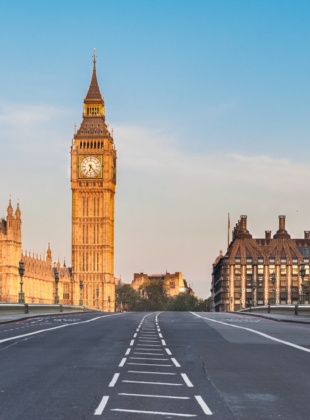The electoral mountain facing the Lib Dems

Jo Swinson declared the Liberal Democrats are ?winning and on the up? after the Brecon and Radnorshire by-election. Improving and succeeding they may be. Nevertheless, before we get carried away with the rhetoric we need to step back and do some solid electoral mathematics.
In the 2017 general election the Liberal Democrats won 12 seats. Apart from in the 2015 general election, this is the lowest tally of seats won by the Lib Dems or their historic counterparts since 1979. Only a few have strong majorities, and the Lib Dems are still absent from the Midlands and, apart from Westmoreland, the whole of northern England as well. In summary, this party is starting from a very low base.
But there are positive signs for the party. Brecon was a success, and the Sheffield Hallam by-election should give them more momentum. But the fact these two seats are holding by-elections is incredibly lucky for the party. Brecon is their 13th target seat from the Tories, and Sheffield Hallam is their top target from Labour. If Jo Swinson wants to repeat history in anyway, they should be winning these seats comfortably. In 1993 the Lib Dems were able to win their 430th target seat, Christchurch, by a two-to-one margin on a swing of 35% (and it was far from an isolated example). Maybe I should wait to see what happens in Sheffield but scraping a win in one of their top target seats against the Tories doesn?t scream massive seat shift to me.
Aside from whatever criticisms I might have about their performance in by-elections, the real problem for the Liberal Democrats is the sheer size of the electoral mountain they have to climb.
To demonstrate this I want to draw a comparison to an historical parallel. The Liberal Democrats went into the 1997 general election defending 20 seats and came out with 46 after big swings in their target seats. Ultimately, to go from 12 seats to whatever large figure Lib Dem politicians want to start splashing about, they need to do much better than Paddy Ashdown did over twenty years ago. But this comparison will help to show how tough that will be.
The 1997 general election ? the biggest night of Lib Dem gains
I?ve taken the seats susceptible to a 10% swing either way to be the main battleground for the Conservatives and Lib Dems.
The Lib Dems won 30 seats from the Conservatives in 1997, with an average swing of just over 6% from the Tories to the Lib Dems in those seats. On the actual swing they should have won around 25, so to take 30 meant they did very well in targeting their vote.
However, the key here is that this battleground was incredibly rich pickings for the Lib Dems. There were 55 seats Conservative-held seats that the Lib Dems could have picked up on a 10% swing. Winning 30 (including some actually over the 10% swing margin) was pretty good going. They might have actually done better had Labour not had such a successful evening and overtaken the Lib Dems in several seats.
How things look like this time
By comparison the Lib Dems are now facing an electoral dessert. This time, instead of 55 potential Tory seats requiring a swing of less than 10% to take, Jo Swinson finds she only has 13 to target. Less than a quarter of the number. Even if the Lib Dems won every single one of these, they?d be on 25 seats, which would probably leave them still in fourth place in the Commons.
Also, as a group, these seats aren’t much more pro-Remain than the country as a whole. Richmond Park, St Albans and Winchester look like pretty soft targets. The Remain votes in those three seats were over 60%. Cheadle and Cheltenham are other relatively pro-Remain targets. But it?s not that easy for the rest. In North Cornwall, 60% voted Leave, as did 57% in North Devon and 55% in St Ives. Their rural South West base, that did so well for them in 1997, looks like it might provide slim pickings for them this time.
Targeting the Remainer Conservative seats in the South East
The party ultimately hopes it can replicate its European Parliament results in the South East. As we all know, European Parliament elections are not general elections, but it does give us a useful indicator of where the Tories might face significant challenges from the Liberal Democrats. However, even here the success story is limited.
Despite their sizeable share of the vote in the Euros, the Lib Dems look surprisingly thin on the ground when you tally the number of seats they actually came first in. The Lib Dems topped the poll in only 5 of their top 13 Tory-held targets seats ? in fact, the exact same 5 seats I mentioned above as being relatively pro-Remain.
Then the Lib Dem successes in Tory territory appear a little farfetched. After those first five, we have to drop down to target seat 26, Guildford, to find a constituency the Lib Dems came top in. Guildford would require a 16% swing from the Conservatives to take in practice. It?s not impossible, but it?s very hard. Most of these Tory seats in the Home Counties that the Lib Dems had big successes in require 20%+ swings in a general election, and that?s unlikely. †
I don?t think the Lib Dems would want to be entirley† pegged to their Euro successes either. The Lib Dems did relatively poorly in Eastbourne and North Norfolk (where both incumbent Liberal Democrat MPs are stepping down or have resigned). I may also be far from the electoral expert north of the border, but the Lib Dems still face significant challenges from the SNP in most of their Scottish seats, including Jo Swinson?s.
Should we write off big Lib Dem successes?
The incredible volatility of politics in recent years means only one thing: expect the unexpected. I have outlined how the Liberal Democrats face an incredible struggle to have the impact in seats that they think a large shift in votes their way should suggest. But is a large shift of votes their way likely? Yes, at the moment I?d say so, but in particular places yielding few seats.
More important questions are from where do these votes come? And who will benefit from this shift? Unfortunately, the one party unlikely to benefit is the Lib Dems themselves. Expect the impact to be felt far more noticeably in Conservative-Labour marginal seats, where a very large number of constituencies with tiny majorities could switch hands purely because one party?s voter base crumbled quicker than the other. †






